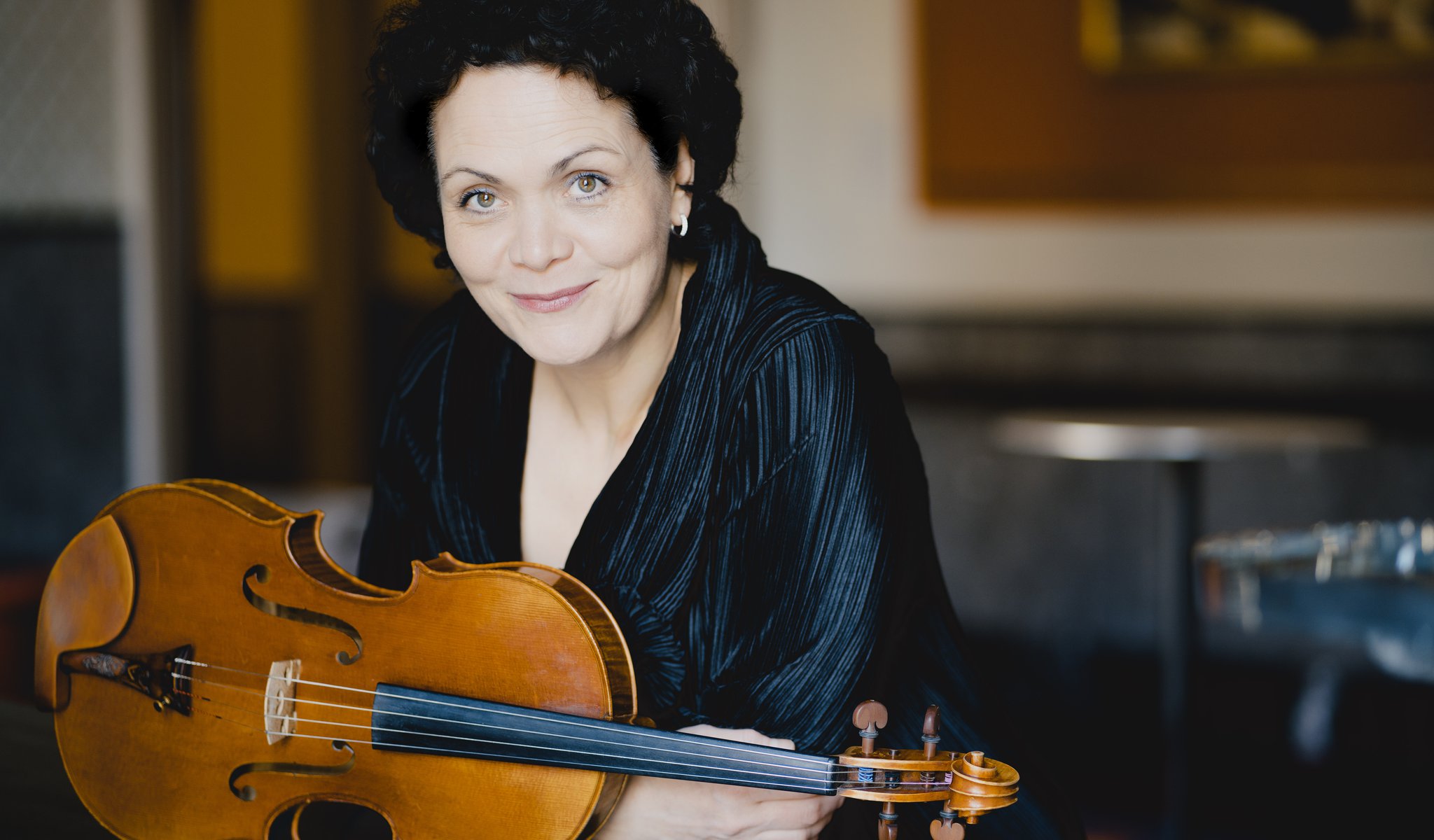
Orchestral concert: Schumann, Debussy, Kurtág, Ravel
Zimmermann, Fischer
Program
Featuring
Other information
The event is about 2.5 hours long.
About the event
Please note that at this concert wearing a face mask covering the mouth and nose is compulsory. Thank you for your cooperation!
This program of the Festival Orchestra with Tabea Zimmermann draws an arc from German landscapes to Rome, to regions of Hungary and even to the Greek islands. The program will begin with two extraordinary concertos by Schumann: the first is rendered unique by its unusual solo apparatus, while the cello concerto is characterized by distinctive musical innovations that can be interpreted in many different ways. Performed in the arrangement and with the solo of the German violist world-famous for his musical communication, who is the resident artist of the Berlin Philharmonic Orchestra in season 2020-21, the concerto will be followed by young Debussy’s tale from Rome conjuring up scenes of spring awakening. The colorful program will continue with György Kurtág’s Bartókian Movement for Viola and conclude with the compilation from Ravel’s grandiose ballet.
In Schumann’s extraordinary but rather neglected work, four modern horns – developed around that time – play the solo part, while there are two natural horns in the orchestra. The opening chords of the three-movement concert piece immediately lead the audience into German forests and landscapes. After the first movement and the moody romance, the piece ends with a rhythmic finale.
Konzertstück (Concert Piece) – this is the title of both the composition for four horns and the cello concerto. In the latter’s case, Schumann also added: “Concert Piece for Cello with Orchestral Accompaniment” The composition, which was for a long time attributed to a disturbed mind but is now rather linked to Schumann’s late style, is more dominated by lyrical monologues than virtuosity. Due to its high register, the cello part literally cries out for an arrangement for viola, which was made in 2018.
In 1885, Debussy received a four-year scholarship in Rome. While staying there, he was obliged to annually send a composition to the Academy of Fine Arts in Paris. The committee deemed Printemps (1887) colorful but too modern and that was when the word “impressionism” was first used about Debussy’s music. The symphonic suite sets to music without actual melodies the awakening and blossoming of nature, using only a variety of moods.
György Kurtág gained worldwide fame with the unmistakably unique style of his musical miniatures. However, before learning about contemporary Western music in Paris, he had a creative period at home. The final piece of that period was his Viola Concerto, where Kurtág paid tribute to Bartók’s late style and which won him the Erkel Prize in 1954. The work’s tranquil, lyrical first movement is often performed also as a single concert piece.
Ravel spent three years composing one of his greatest masterpieces, the ballet Daphnis et Chloé telling the story of an ancient Greek pastoral romance. Today, the “choreographic symphony” using several percussionists, as well as a chorus, is more popular in the form of the suites compiled by the composer. Suite No. 2 includes the famous Daybreak scene, the Pantomime telling the story of Pan and Syrinx, and the wild and carefree dance movement concluding the piece.
Did you know? Schumann’s Concerto premiered in Leipzig on February 25, 1850 (conductor: Julius Rietz), his Cello Concerto in Leipzig on June 9, 1860 (soloist: Ludwig Ebert, conductor: Julius Rietz), Debussy’s Rites of Spring premiered in Paris on April 18, 1913 (conductor: Rhené-Bâton), Kurtág’s Movement in Debrecen in 1955 (soloist: Imre Pataki, conductor: Tamás Blum), Ravel’s ballet, Daphnis and Chloé premiered in Paris on June 8, 1912 (conductor: Pierre Monteux); the Concerto was last performed by the Festival Orchestra in Prague on August 21, 2010 (soloists: Zoltán Szőke, Dávid Bereczky, András Szabó, Zsombor Nagy, conductor: Iván Fischer), the Cello Concerto in Hong Kong on June 19, 2004 (soloist: Mischa Maisky, conductor: Iván Fischer), the Movement in Budapest on February 28, 2004 (soloist: Lars Anders Tomter, conductor: Sylvain Cambreling), Suite No. 2 of the Daphnis and Chloé was performed on September 23, 2016 (conductor: Iván Fischer), the Rite of Spring is featured in the program of the orchestra for the first time.
Contemporary events The novel The Scarlet Letter by the American writer, Nathaniel Hawthorne was published in 1850 / the Agreement of Olmütz was signed on November 29, 1850, by which Prussia accepted Austria as the leader of the German Confederation / Johannes Brahms’ Serenades No. 1 and 2 premiered in Hamburg on February 10, 1860 and than in Hannover on March 3 / Abraham Lincoln was elected the president of the United States in November 6, 1860; in response eleven southern states left the Union and established a new federation / The first part of the novel in seven parts (In Search of the Lost Time) by the French writer, Marcel Proust was published in 1913 / Marcel Duchamp, French artist installed a bicycle wheel on one of the chairs in his studio in 1913, which was considered to be the very first so-called readymade / on May 29, 1913 Igor Stravinsky’s ballet, the Rite of Spring premiered in Paris / on May 14, 1955 the military and political organization of the Central and Eastern European communist countries, Warsaw Pact was created with the Soviet Union as its leader / the book Transformations and Symbols of the Libido by Carl Gustav Jung, the Swiss psychologist was published in 1912 / Arnold Schoenberg’s work, the Pierrot lunaire was presented in Berlin in 1912